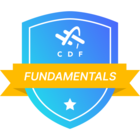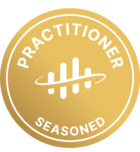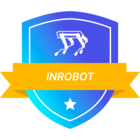Hello esteemed members of the Cognite community,
I come to you with a sense of urgency and a deep need for expert guidance. I've been attempting to familiarize myself with Cognite for the last six months, and despite my best efforts, I find myself at an impasse with some critical aspects. My situation is time-sensitive, and I am truly hoping for your assistance to navigate this complex but fascinating journey.
My Setup:
Environment: Google Colab (Free version)
SDK: Cognite Python SDK
Assets: Wind Farm with two sub-assets (Asset A and Asset B)
My Goals:
Connect to Cognite Project via Python SDK: I need to use my client ID and client secret to establish a connection from Google Colab.
Create Hierarchical Assets: My aim is to create a parent asset, named "Wind Farm," and within this parent asset, include two child assets, Asset A and Asset B.
Upload Time-Series Data from CSV: I have CSV files containing wind-speed and wind-power data for Asset A and Asset B. I need to upload these as time-series data to the corresponding assets. (Below is a snippet of what the data might look like - the numbers are all random and are made-up for the sake of this query!)
| time | Asset A- Wind Speed | Asset B - Wind Speed | Asset A - True Wind Power | Asset B - True Wind Power |
| 11/1/19 00:00 | 23.105 | 23.3822 | 1 | 1 |
| 11/1/19 00:10 | 23.3516 | 23.7522 | 1 | 1 |
| 11/1/19 00:20 | 22.681 | 23.7341 | 1 | 1 |
| 11/1/19 00:30 | 22.6935 | 24.3308 | 1 | 1 |
The data is recorded every ten minutes. Let’s say it ranges from November of 2019 to February 28th, 2019.
Apply Models in a Rolling Window Fashion and Visualize Results: This is where it gets intricate. I plan to apply statistical and machine learning models like Persistence and Random Forest to the time-series data. I need to do this using a rolling window approach with a forecast horizon of 6 hours, a forecast range of 5 days, and a slide (or roll) of 6 hours, all while dealing with 10-minute intervals in the data. Additionally, it's essential for me to visualize these time-series and forecast results within Cognite, if possible. (Please note: that I am familiar with applying these models - I am more interested in linking these results and linking the visualizations to the Cognite project)
Link Forecasts to Assets: After running these models, I must save the forecast data as new time-series and link them to Asset A and Asset B within the Cognite platform.
My ultimate aspiration is to create a 3D Digital Twin of our wind farm. The vision is to have an interactive interface where one can click on a wind turbine and instantly view the analyses and forecasts applied to that asset.
I am truly at a critical point in my project, and your expert advice could be the turning point for me. I promise to give back to this community with whatever knowledge and expertise I gain through this experience.
I want to clarify that my request for help doesn't stem from a lack of effort on my part. I've combed through multiple queries and even taken courses in an attempt to resolve these challenges independently. However, the complexity and the practical aspects have made it difficult for me to proceed without guidance. Please understand that I am not taking this community's expertise for granted; I am genuinely in need of assistance and am committed to learning.
Thank you immensely for taking the time to read through my detailed request. I would be incredibly grateful for any guidance or advice you can provide. If there are flaws in my approach or understanding, I welcome your corrections wholeheartedly. If you have any questions or need further clarification, please don't hesitate to ask. I am also open to receiving any code snippets or other resources that could assist me in accomplishing my goals.
Warm regards,
Vishnu Iyengar
Best answer by HaydenH
View original

 Check the
documentation
Check the
documentation Ask the
Community
Ask the
Community Take a look
at
Academy
Take a look
at
Academy Cognite
Status
Page
Cognite
Status
Page Contact
Cognite Support
Contact
Cognite Support




